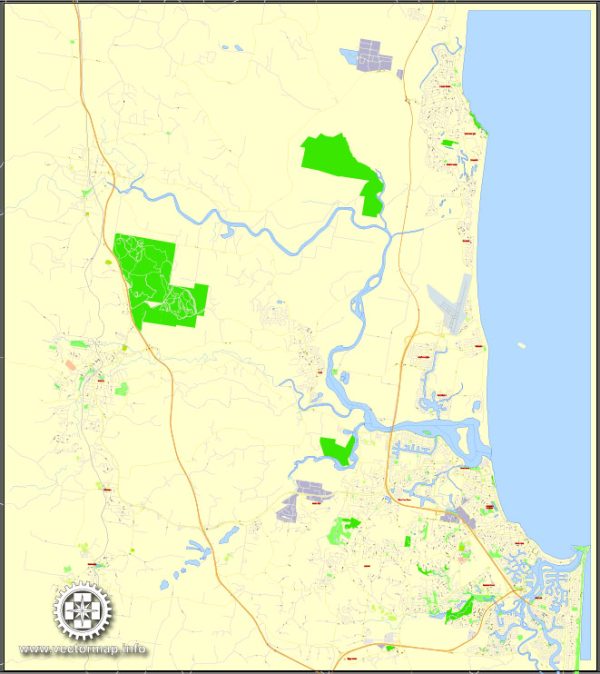The Sunshine Coast is a beautiful region located on the eastern coast of Australia in the state of Queensland. It is known for its stunning natural beauty, diverse ecosystems, and a generally subtropical climate. Here’s an ecological description of the Sunshine Coast:
- Climate: The Sunshine Coast enjoys a mild subtropical climate with warm temperatures year-round. Summers are typically hot and humid, with temperatures often exceeding 30°C (86°F). Winters are mild, with daytime temperatures averaging around 20°C (68°F). The region experiences a wet season during the summer months, which can lead to lush vegetation and waterways.
- Coastal Ecosystems: The Sunshine Coast is renowned for its stunning beaches and coastal environments. The region features a variety of ecosystems, including sandy beaches, rocky shorelines, and estuaries. These areas are home to a wide range of marine life, including corals, sea turtles, dolphins, and various fish species.
- Rainforests and Hinterland: Inland from the coast, the Sunshine Coast transitions into a lush hinterland that is part of the Great Dividing Range. Here, you can find subtropical rainforests with a diverse range of plant and animal species. The Blackall Range and the Glass House Mountains National Parks are known for their stunning scenery, walking trails, and unique flora and fauna.
- Biodiversity: The region’s biodiversity is rich and varied. It is home to many unique and endemic species, both in its terrestrial and marine ecosystems. The region is known for its diverse birdlife, including lorikeets, kookaburras, and various species of parrots. In the forests, you may find marsupials like wallabies and possums, as well as reptiles and amphibians.
- Protected Areas: The Sunshine Coast has several protected areas and national parks, ensuring the preservation of its natural heritage. These include Noosa National Park, Great Sandy National Park, and Mapleton Falls National Park, among others. These parks offer opportunities for hiking, wildlife viewing, and experiencing the region’s natural beauty.
- Waterways: The region is crisscrossed by numerous rivers, creeks, and waterways. The Maroochy River, Noosa River, and Mooloolah River are just a few examples. These water bodies support a wide range of aquatic life, including fish, crustaceans, and waterbirds.
- Conservation Efforts: The local community and government are actively involved in conservation efforts to protect the unique ecosystems of the Sunshine Coast. Initiatives include habitat restoration, wildlife conservation programs, and efforts to combat invasive species.
- Human Impact: The Sunshine Coast’s natural ecosystems face challenges from urban development and tourism, but there is a strong emphasis on sustainable practices and eco-tourism to minimize negative impacts on the environment.
The Sunshine Coast is a prime example of Australia’s natural beauty, and its diverse ecosystems make it a popular destination for nature lovers, hikers, and those interested in experiencing the unique wildlife and landscapes of the region.


 Author: Kirill Shrayber, Ph.D.
Author: Kirill Shrayber, Ph.D.